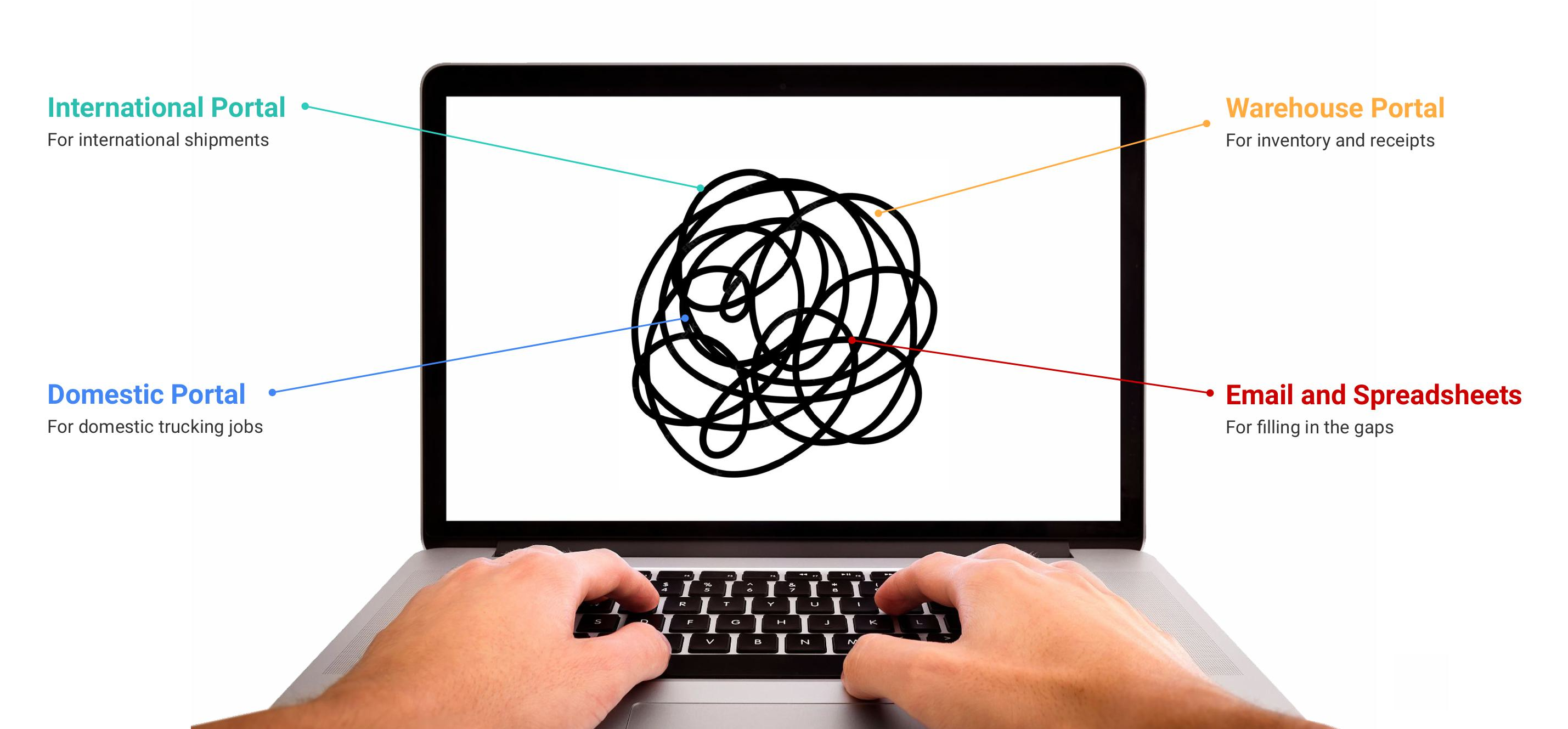In this article
In our recent webinar, Logixboard Founder and CEO Julian Alvarez, and Sr. Solutions Consultant Jess Somera, discussed how to move beyond transactional customer relationships and embed yourself deep into your clients’ supply chain.
Here are five things logistics service providers need to understand in order to get ahead of their competition:
1. In 5 years, the most successful LSPs will be the ones who leverage their data to provide clients with tangible business benefits.
The logistics market is saturated right now. Inflation is on the rise and consumer spending is down, so we are seeing high inventories and surplus capacity. This means that even more logistics service providers are competing for the same business.
As a result, the service of moving goods is becoming commoditized. Plenty of LSPs are good at moving things from point A to point B, and everyone is putting their freight on the same trucks. To stand out, you have to show customers that you are more than just your rates and your service.
Importers and exporters are searching for partnership. They are looking to logistics service providers to add real strategic value to their business. They’re asking for help with things like efficiency, cost reduction, streamlining their operations, and making smarter, faster decisions.
2. LSPs have a lot of valuable data, but it’s impossible to take advantage of it when it’s siloed.
As a logistics service provider, you have a large portion of your customers’ supply chain data, which puts you in a strong position to be the kind of strategic partner they’re looking for.
But the challenge is that the data is often scattered across several systems. It is common for LSPs to have multiple TMSs, WMSs, and ERPs to manage their operations. The “best-in-class” technology strategy makes sense internally – but for your customers, this leads to disjointed data, multiple logins, and a poor user experience.

So LSPs need to bridge the gap between what they use internally to manage their operations, and the solutions their customers need to do their jobs well. Abstract away the complexity into a seamless experience.
This is not a quick and easy thing to achieve, so LSPs need to start investing in this today so that they can win the race tomorrow.

3. Importers and exporters view supply chains with a different lens than LSPs.
Even LSPs with a simpler internal technology stack struggle to create a great customer experience, because shippers think about their supply chain differently than LSPs do.
Importers and exporters need a clear picture of what’s happening with their cargo – from PO generation to final delivery. And they’re more focused on POs, product codes, and SKUs than containers or shipments. The only reason they ask you about the boat on the water is because it’s the only way they’ve ever been given this information in the past.
Once you’ve got all their supply chain data in one place, start thinking about how to provide them visibility from their perspective – so they can make the best decisions for their business and operate more efficiently.
4. The number one way to shift from transactional to strategic is to provide proactive insights.
Now you’re in a position to leverage your customers’ data to embed yourself deep into their supply chain and become an extension of their business. Get beyond the typical track-and-trace functionality that has become the status quo. Provide new insights that help them operate more efficiently, save money, and make better decisions.
Empower shippers to proactively fine-tune their supply chain with data trends like:
- Trade lane metrics
- Supplier and carrier performance
- Historical average transit times
- Freight spend by transit mode
- KPIs specific to their business
Make it easy for them to examine this data across time periods and make quick comparisons.
5. To be successful with a data-driven customer experience, LSPs must purposefully weave it into their go-to-market motion.
To successfully sell yourself as a strategic partner to importers and exporters, your data-driven approach needs to be incorporated into every interaction with prospects and customers.
Ensure the message comes across on your company website and LinkedIn account; train your sales teams how to demo the technology and explain the business benefits you bring to the table; train your customer service teams to continue those same talk tracks throughout the entire customer journey.
You’re now offering value that clients can’t get from your competitors, so shout it from the rooftops.
